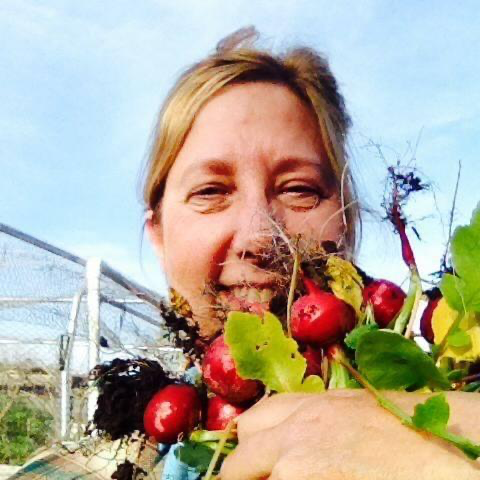Onions and garlic need lots of light, 10 to 12 hours, regular water and sometimes light fertilization.
![]()

By Sharon McCray

Sharon McCray
“Don’t cry for me Sweet Vidalia.” Sorry, I just couldn’t resist. Yes, it is finally time to get those onions and garlic in the ground, and Vidalia’s are my personal favorite. Gardening-wise, there are two varieties of onions, long and short day. The planting cutoff point between the two varieties is San Francisco so my focus will be on short day varieties.
There are three types of onions: single bulbs, sometimes called “sets,” which are commercially grown from seed and sold as small onion bulbs. Then there are multiplier onions like shallots and green onions and also tree types such as chives. When buying onion sets, note that the color description refers to the skin on the onion and not the inside.
Onions and garlic need lots of light, 10 to 12 hours, regular water and sometimes light fertilization. Onions grown from sets have a tendency to produce more plant and less onion in the ground and this is why it is best to plant from small starts. Starts refers to plants that have not yet formed bulbs. Now is the time to get whatever onion you choose in the ground to allow for winter rains to keep them moist. They will grow vegetatively throughout the winter and not “bulb” up until spring. Varieties such as Yellow, White Bermuda, Maui, Vidalia and Excel are sweeter but poor keepers overall. Torpedo onions are not as sweet as other short day varieties. Long day varieties have a tendency to taste stronger.
An acid soil with pH from six to seven is best for onions along with a rich, well-drained soil that should not dry out during the growing season. This might mean supplemental watering this winter. Allow enough room for your plants to bulb out and avoid planting too close together. If planting with seeds, it is a good idea to thin throughout the growing season, using the thinned plants in salads. An all-purpose fertilizer, used after germination and at half strength will provide enough nutrition to keep your plants healthy. Do not use sulfur on your soil as it adds pungency to onions making them bitter. Using compost is the easiest and best way to neutralize the soil to create the proper pH for success.
 Onion seeds are only viable for one year. This is important to note if you enjoy saving seeds from season to season or buying discounted seeds. Keeping the onion bed well weeded will help your plants grow better as they don’t like the competition from weeds or other plants.
Onion seeds are only viable for one year. This is important to note if you enjoy saving seeds from season to season or buying discounted seeds. Keeping the onion bed well weeded will help your plants grow better as they don’t like the competition from weeds or other plants.
Bunching onions like scallions grow pretty much anywhere they can get full sun and regular water and should be harvested as needed. Some excellent varieties for our valley include Evergreen white, Southport White, Sweet Spanish and White Lisbon.
Chives produce a light purple flower which can be used in salads along with the green stalks. After the flowers bloom, cut back the plants to about four inches and allow them to re-bloom.
 It is time to harvest onions when the tops turn yellow and fall over. Stop watering for a few days, dig them up and allow them to rest for a few days before using. Too much water after the tops have yellowed will encourage rotting.
It is time to harvest onions when the tops turn yellow and fall over. Stop watering for a few days, dig them up and allow them to rest for a few days before using. Too much water after the tops have yellowed will encourage rotting.
When planting garlic the cloves should not be separated from the main bulb until you are ready to plant. The size of the clove is proportionate to the overall size of the mature bulb. Do not remove the paper skin from the clove before planting.
The November Old Time Farm and Garden Show on KKUP falls on Thanksgiving day this year. It will be a day of music. Our next scheduled show is Dec. 23. Hope you can join us.
Sharon McCray is a California native living in Santa Clara County since 1959. She became certified as a University of California cooperative extension master gardener in 1992 and a UCCE master naturalist in 2015. She hosts a monthly radio show on KKUP public radio and is now retired.






